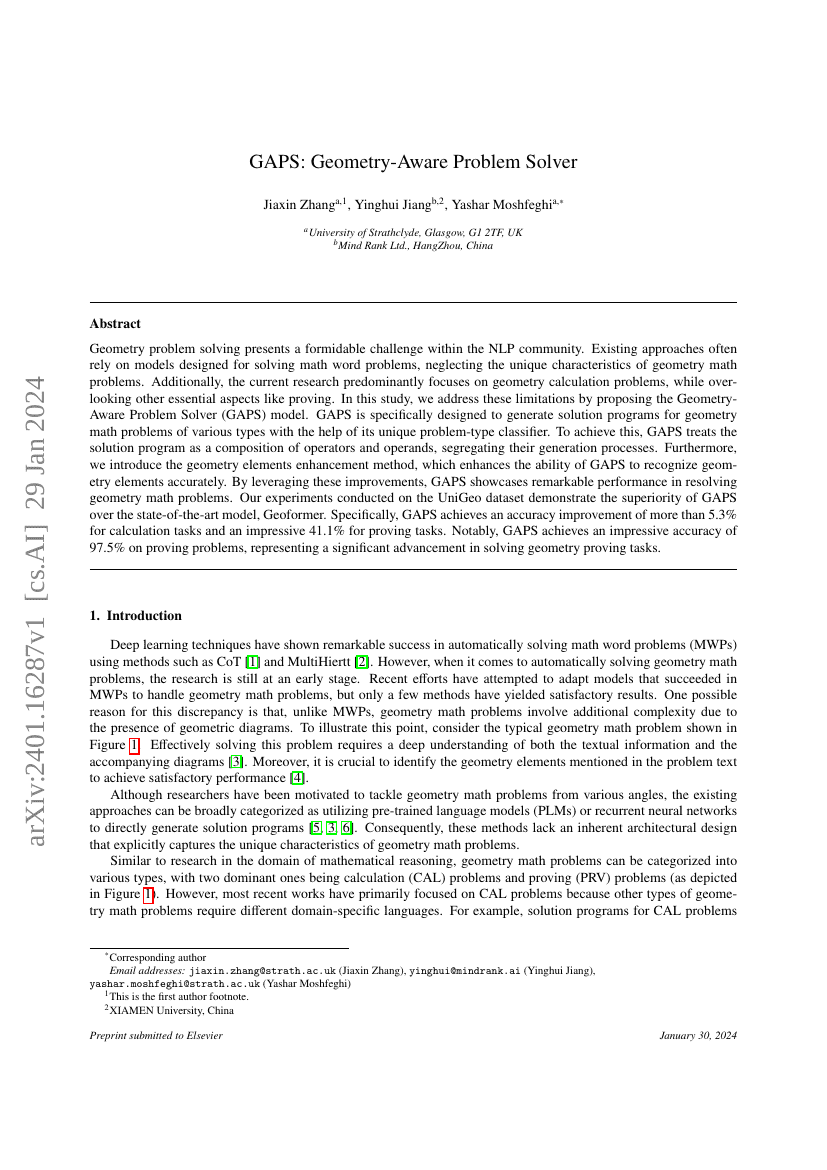Command Palette
Search for a command to run...
Jiaxin Zhang; Yinghui Jiang; Yashar Moshfeghi

Abstract
Geometry problem solving presents a formidable challenge within the NLP community. Existing approaches often rely on models designed for solving math word problems, neglecting the unique characteristics of geometry math problems. Additionally, the current research predominantly focuses on geometry calculation problems, while overlooking other essential aspects like proving. In this study, we address these limitations by proposing the Geometry-Aware Problem Solver (GAPS) model. GAPS is specifically designed to generate solution programs for geometry math problems of various types with the help of its unique problem-type classifier. To achieve this, GAPS treats the solution program as a composition of operators and operands, segregating their generation processes. Furthermore, we introduce the geometry elements enhancement method, which enhances the ability of GAPS to recognize geometry elements accurately. By leveraging these improvements, GAPS showcases remarkable performance in resolving geometry math problems. Our experiments conducted on the UniGeo dataset demonstrate the superiority of GAPS over the state-of-the-art model, Geoformer. Specifically, GAPS achieves an accuracy improvement of more than 5.3% for calculation tasks and an impressive 41.1% for proving tasks. Notably, GAPS achieves an impressive accuracy of 97.5% on proving problems, representing a significant advancement in solving geometry proving tasks.
Benchmarks
| Benchmark | Methodology | Metrics |
|---|---|---|
| mathematical-question-answering-on-geometry3k | GAPS | Accuracy (%): 68.0 |
| mathematical-reasoning-on-geoqa | GAPS | Accuracy (%): 67.8 |
| mathematical-reasoning-on-pgps9k | GAPS | Completion accuracy: 61.2 |
| mathematical-reasoning-on-unigeo-prv | GAPS | Accuracy (%): 97.5 |
Build AI with AI
From idea to launch — accelerate your AI development with free AI co-coding, out-of-the-box environment and best price of GPUs.